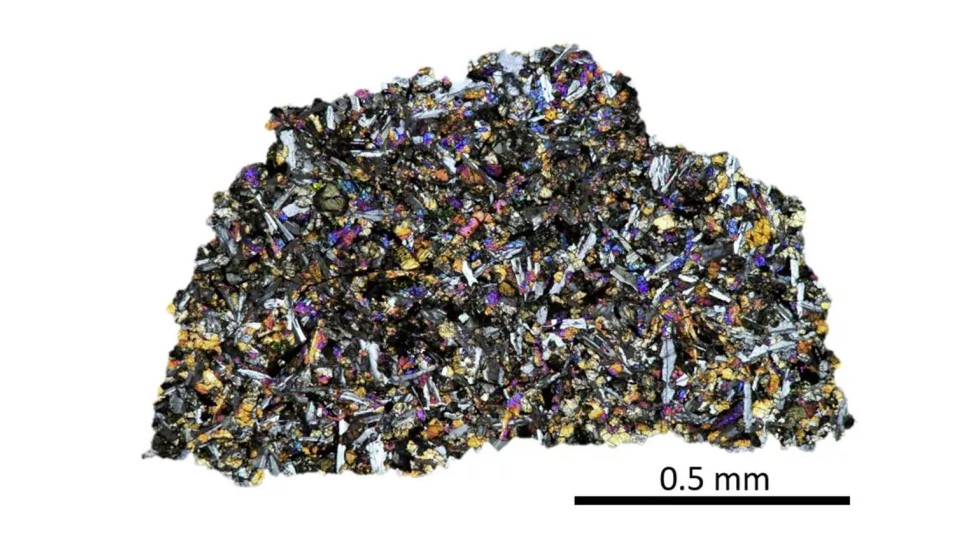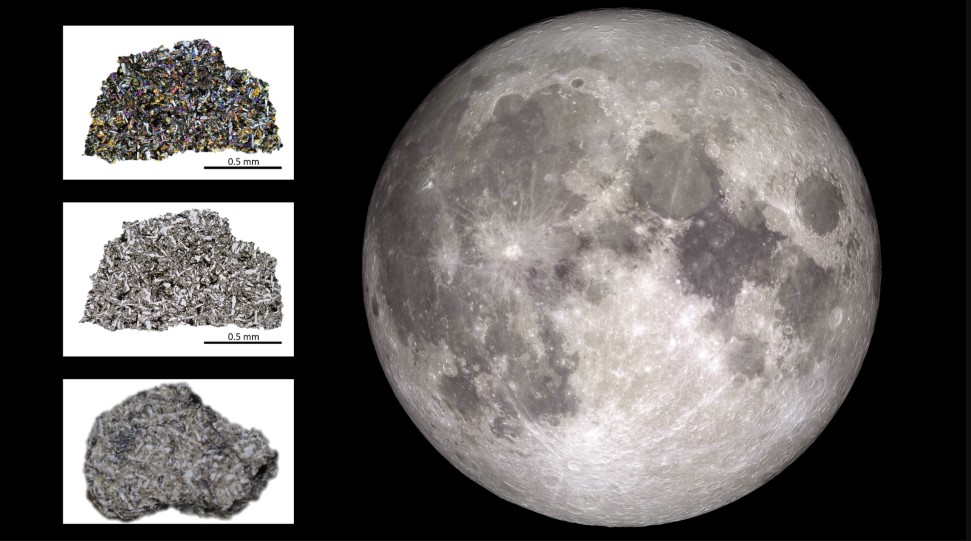Traces of gases of terrestrial origin found in Moon meteorites from Antarctica

The moon rocks aren't only about the rock; the gas trapped inside is just as fascinating. The first definitive proof that the moon inherited chemical elements from Earth's interior has been discovered in a new study of six lunar meteorites found in Antarctica. This lends support to the idea that our planet's most long-term companion, age, was born when something enormous collided with the Earth in ancient history, also known as the big impact theory.
Patrizia Will observed traces of helium and neon — both noble gases that are extremely reluctant to combine with other elements – in six lunar meteorites from NASA's Antarctic collection while conducting her doctoral dissertation at ETH Zurich in Switzerland.
The volcanic rock that forms the meteorites is called basalt, which cooled quickly after being formed as magma welled up from the moon's interior and then rapidly cooled. Within the samples, lunar glass particles were created during this cooling process, retaining chemical traces of solar gases. The glass was protected from charged particles, both those from the sun's continuous stream of solar wind and those from beyond the solar system, known as cosmic rays, by subsequent layers of rock that enveloped it. The researchers reasoned that because of this isolation, the gases trapped within could be identified.
The researchers used a noble gas mass spectrometer dubbed Tom Dooley after a Grateful Dead song to capture the fingerprints of helium and neon in the meteorites. (Mass spectrometers separate samples by weight.) "Finding solar gases, for the first time, in basaltic materials from the moon that were not linked to any lunar surface exposure was such a fantastic finding," Will added in a statement.
According to this research, the moon was formed through a huge collision. The work may also provide a road map for studies into how rocky planets formed in the solar system. According to one version of the giant impact hypothesis, a protoplanet named Theia collided with Earth 4.5 billion years ago, around 60 million years after the planet itself emerged.

To throw out material from Earth's interior that could stay in orbit and combine into another body rather than falling back down to our infant planet must have been truly dramatic. The moon, which is lightweight and lacks significant quantities of iron within its structure, is one example of evidence supporting this theory. 30% or so of Earth's mass is trapped inside its iron-rich core, according to other data that support this idea. The moon's mantle rocks are also comparable in composition to those on Earth, and they are distinct from Martian meteorites in many ways.
Scientists required a less severe impact to conduct the study. The moon is constantly bombarded by asteroids because there is no dense atmosphere like on Earth to burn up space rocks. It was most likely a high-energy collision of an asteroid with the moon's surface that produced rock fragments from deep within a substantial lava flow and subsequently fell to Earth as meteorites. Scientists spotted dark space rocks against the dazzling white backdrop of Antarctica, which indicated they had come from elsewhere in our solar system.
The scientists hope that the study's findings will help scientists better understand more than just the moon, since the current evaluation was limited to a few of NASA's 70,000 meteorites. "I'm really optimistic that there'll be a rush to analyze heavy noble gases and isotopes in meteoritic materials," said Henner Busemann, a geochemist at ETH Zurich. He believes that researchers will soon be hunting for other noble gases like xenon and krypton in meteors as a result of this work.
"While such gases are not essential for life, it would be fascinating to know how some of these noble gases survived the terrible and violent formation of the moon," Busemann added. "Such information might assist geochemists and geophysicists in developing new models that explain how such most volatile materials can survive planet formation across our solar system and beyond."
Source: www.space.com